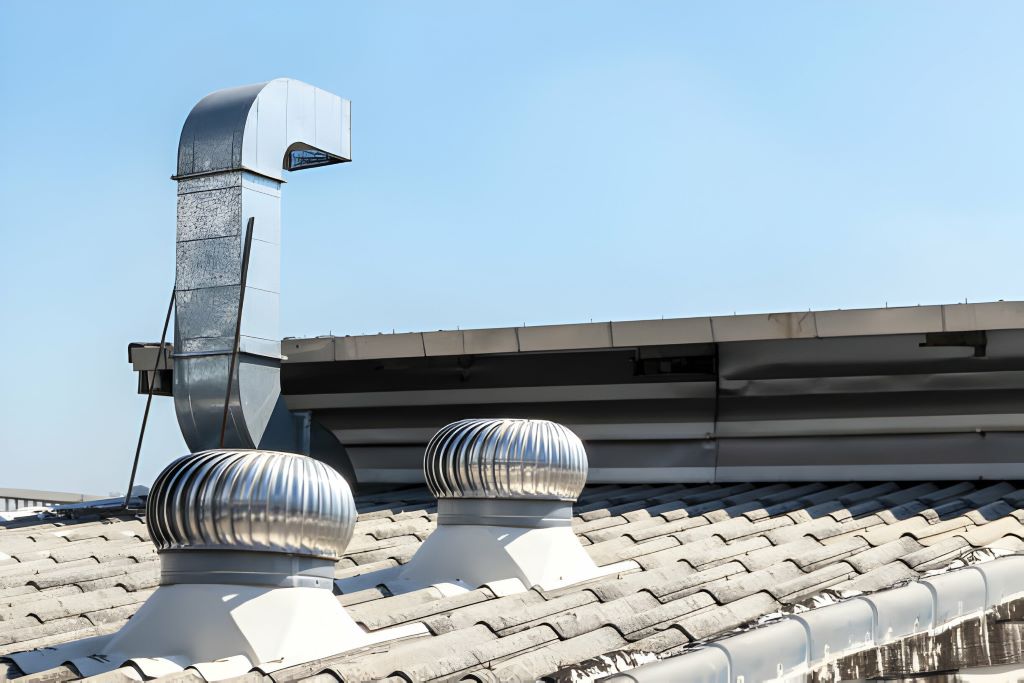When it comes to the infrastructure of our homes the dryer vent system plays a role in ensuring the removal of hot moist air produced during the drying process. While traditional installations typically involve routing dryer vents through walls there is a growing trend towards roof venting. This article aims to delve into the complexities and factors to consider when installing a dryer vent on the roof exploring its advantages, challenges and best practices.
Exploring the Concept of Roof Dryer Venting
Venting dryers through the roof offers an alternative to wall mounted setups. This method involves running a vent duct through your space and creating an exhaust outlet by penetrating the roof surface. Opting for this approach brings benefits, including minimizing lint build up in the ducts achieving an aesthetically pleasing appearance with concealed venting and improving ventilation efficiency by allowing for vertical air discharge.
Challenges and Considerations
While there are advantages to installing a dryer vent on roof it also presents challenges that require careful consideration. Ensuring installation is essential to avoid issues such as roof leaks, condensation accumulation or compromising your home’s integrity.
Proper planning is essential when it comes to venting through the roof in order to comply with building codes and regulations. Factors, like roof slope, vent location and exposure to weather must also be taken into consideration.
Important Components of Roof Venting Systems
A successful installation of a dryer vent on the roof relies on components, which include;
- Vent Cap
The vent cap acts as the external endpoint for the vent duct ensuring that no debris or pests enter while efficiently allowing air to be discharged.
- Vent Pipe
The vent pipe serves as the conduit that carries air from the dryer to the outside of the house. It needs to be made of material with an interior surface to minimize airflow resistance and prevent lint accumulation.
- Flashing
Flashing is used to create a seal around the area where the vent pipe penetrates through the roof surface. This helps prevent water infiltration and potential leaks.
- Roof Jack
A specialized flashing called a roof jack is designed specifically for accommodating the protrusion of the vent pipe, through the roof. It provides a weather resistant seal while ensuring ventilation.
Installing Process:
Installing a dryer vent on the roof requires a process to ensure that the venting system functions and lasts long. Here are some additional details to consider;
1. Planning and Preparation
Start by assessing the structure and layout of the roof. Take into account factors like roof pitch, nearby obstructions and prevailing wind patterns to determine the spot for vent placement. Make sure to obtain any permits and familiarize yourself with building codes and regulations related to dryer vent installations.
2. Roof Inspection
Before cutting into the roof conduct an inspection to check for any existing damage or potential concerns. Ensure that the roofing materials are in condition without any leaks or deterioration that could affect the installation’s integrity.
3. Choosing the Vent Location
Select a spot on the roof that allows for the most direct path for the vent duct to exit your home. Avoid placing it near dormers, valleys or areas to water runoff or debris buildup. Aim for a path that promotes airflow.
4. Cutting an Opening in the Roof
Use tools and techniques to cut a precise hole in the roof surface for accommodating the vent pipe. Take measurements. Exercise caution to prevent damaging underlying roofing materials.
It’s an idea to seek guidance from a roofer or contractor to ensure accuracy and reduce the possibility of any structural harm.
5. Installing Flashing and Roof Jack
To create a seal carefully apply roofing sealant or underlayment, around the edge of the roof opening. Follow the instructions provided by the manufacturer to properly install the flashing and roof jack making sure they fit snugly and align correctly with the vent pipe. Use roofing nails or screws to secure these components in place, being careful not to tighten them and compromise the integrity of your roof.
6. Securing the Vent Pipe
Connect the vent pipe from your dryer outlet inside your home. Route it through your space until it reaches the roof opening. Utilize fittings and connectors to establish an airtight connection between different sections of your vent pipe. Fasten it securely to your roof rafters or joists using straps or brackets ensuring sufficient support is provided while preventing any sagging or dislodgement over time.
7. Weatherproofing and Insulation
To prevent water infiltration as air leaks thoroughly seal around both the vent pipe and roof opening using high quality roofing sealant or caulk. Apply an amount of sealant along all edges of both flashing and roof jack guaranteeing coverage for a durable seal, against various weather conditions.
Moreover it’s worth considering adding insulation around the vent pipe in the attic to prevent heat loss in months and minimize the chances of condensation build up.
Conclusion
In conclusion,installing a dryer vent on the roof provides an efficient way to remove moist air from the dryer while improving ventilation efficiency and appearance. However it requires planning, adherence to building regulations and meticulous attention to detail for a trouble free installation. By understanding the dynamics and considerations involved in roof venting systems homeowners can create a functional and visually appealing solution, for their dryer venting needs.



